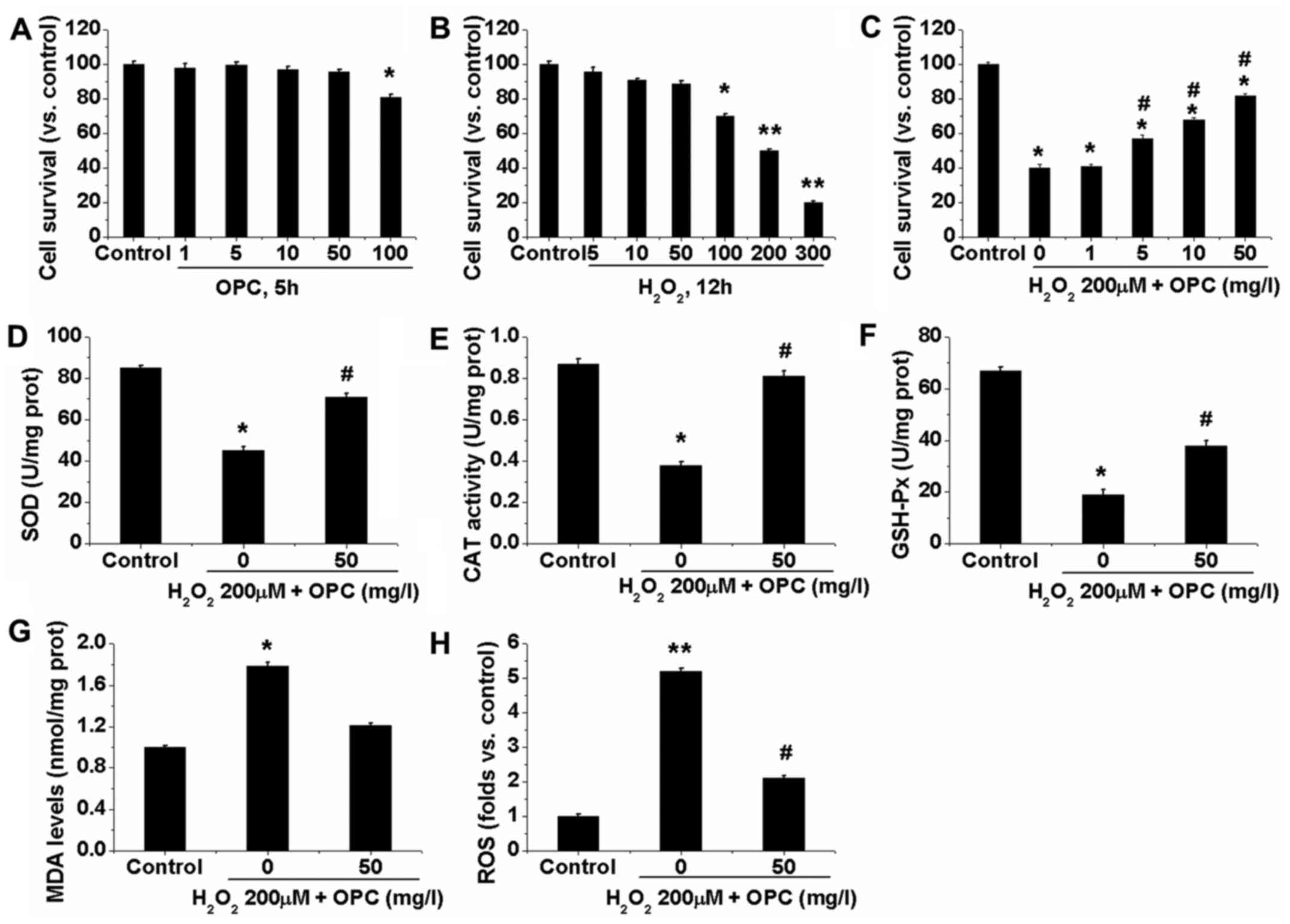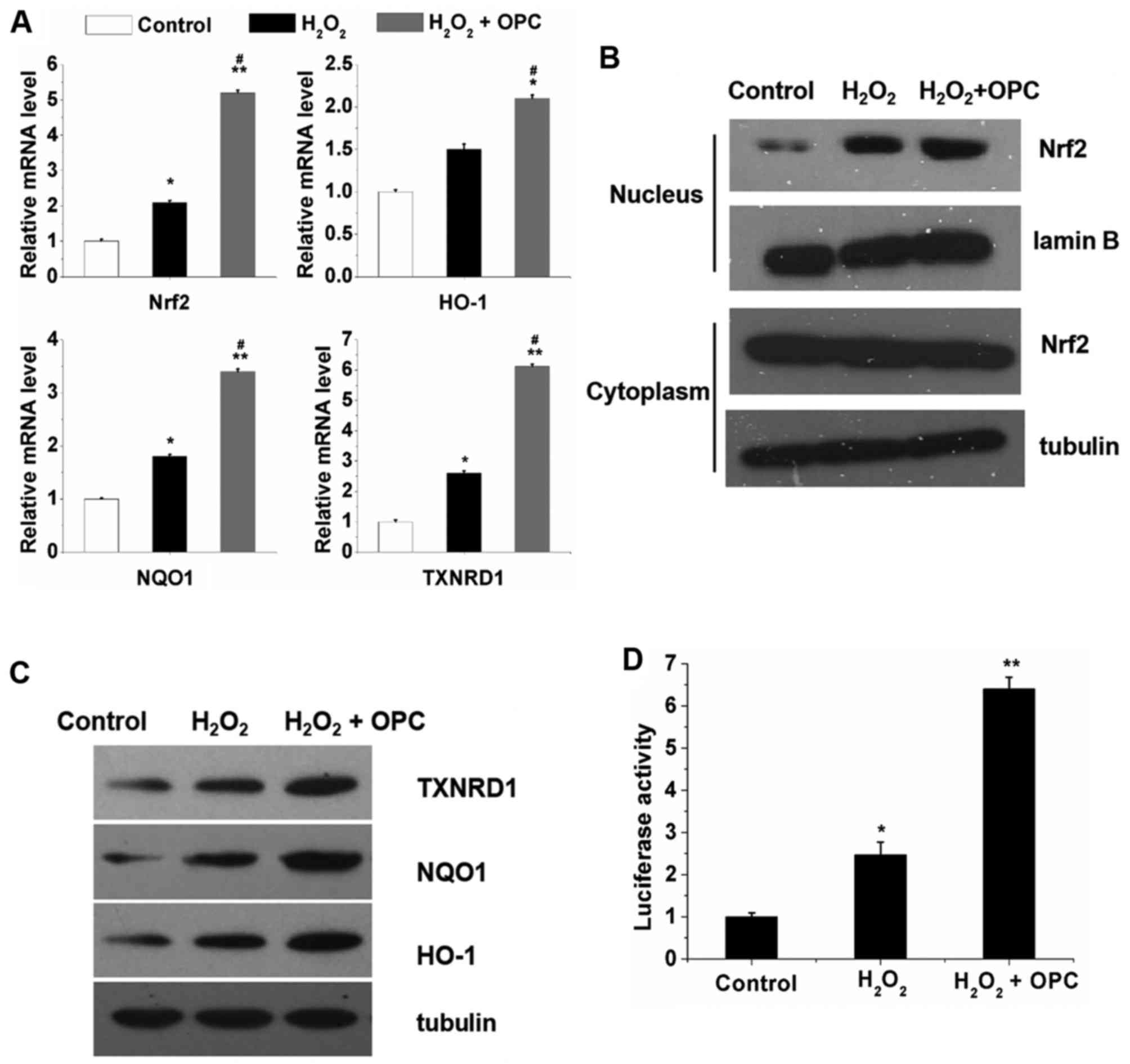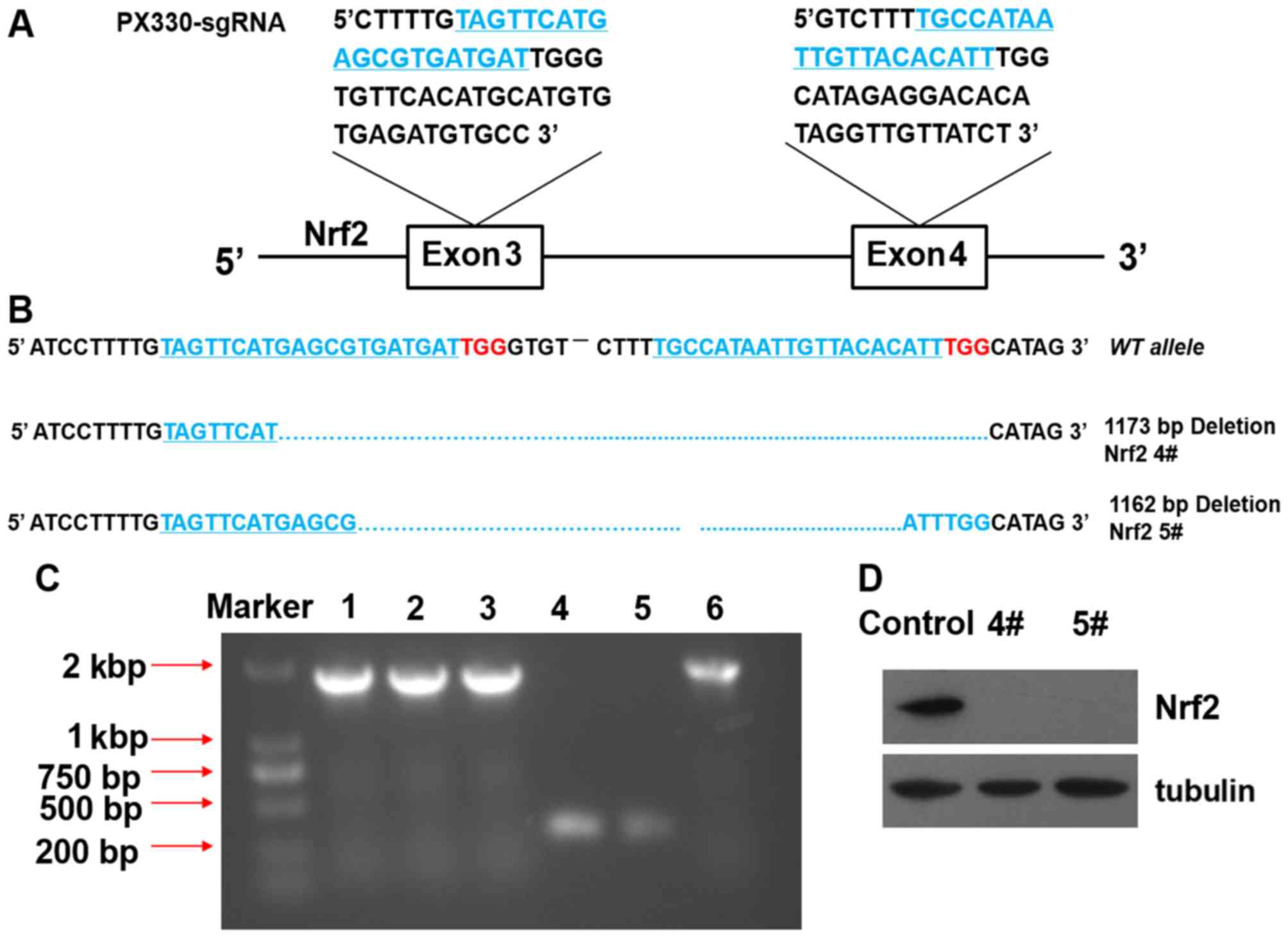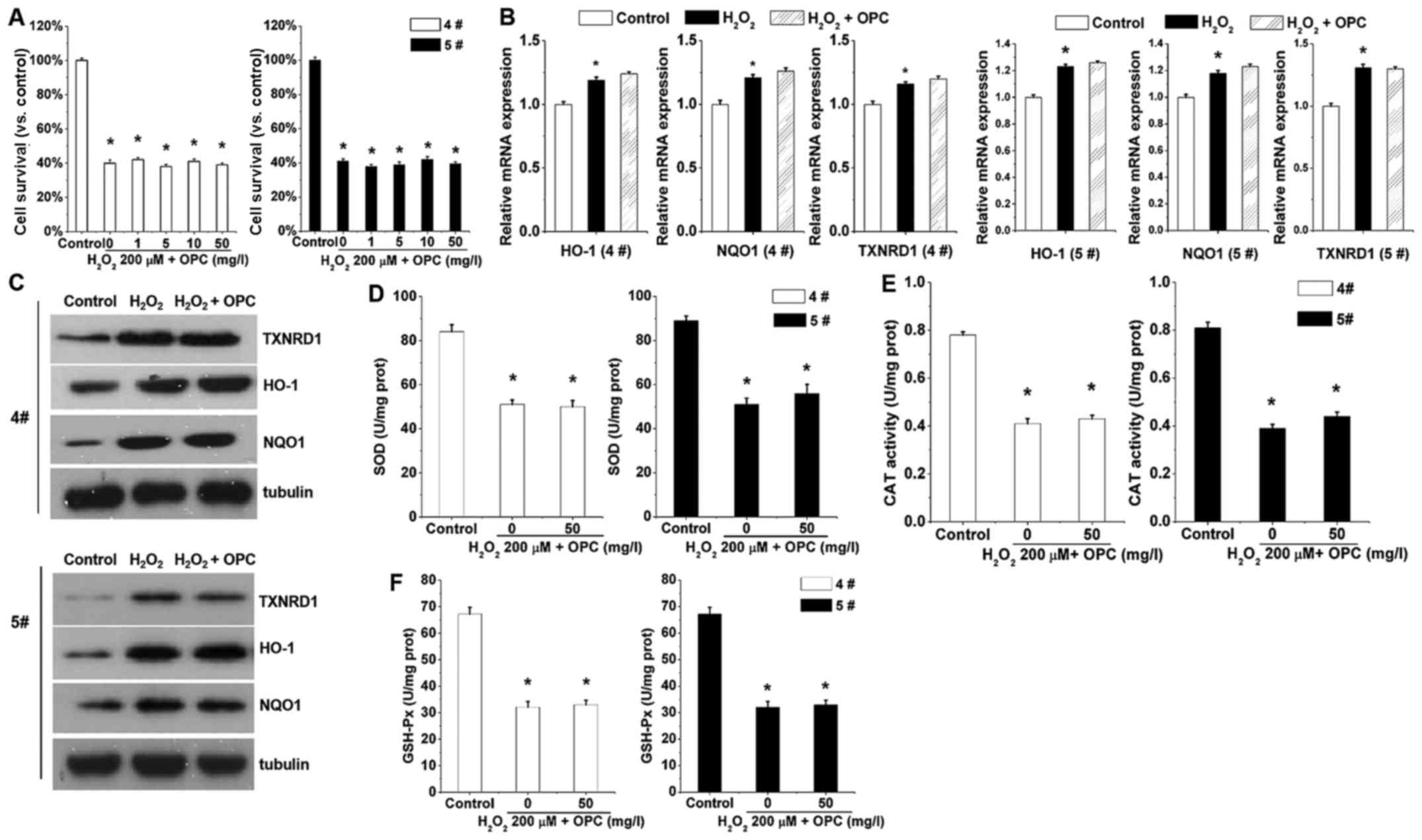|
1
|
Tatsuno T, Jinno M, Arima Y, Kawabata T,
Hasegawa T, Yahagi N, Takano F and Ohta T: Anti-inflammatory and
anti-melanogenic proanthocyanidin oligomers from peanut skin. Biol
Pharm Bull. 35:909–916. 2012. View Article : Google Scholar : PubMed/NCBI
|
|
2
|
García-Conesa MT, Tribolo S, Guyot S,
Tomás-Barberán FA and Kroon PA: Oligomeric procyanidins inhibit
cell migration and modulate the expression of migration and
proliferation associated genes in human umbilical vascular
endothelial cells. Mol Nutr Food Res. 53:266–276. 2009. View Article : Google Scholar
|
|
3
|
Ray SD, Parikh H and Bagchi D:
Proanthocyanidin exposure to B6C3F1 mice significantly attenuates
dimethylnitrosamine-induced liver tumor induction and mortality by
differentially modulating programmed and unprogrammed cell deaths.
Mutat Res. 579:81–106. 2005. View Article : Google Scholar : PubMed/NCBI
|
|
4
|
Wang Z, Su B, Fan S, Fei H and Zhao W:
Protective effect of oligomeric proanthocyanidins against
alcohol-induced liver steatosis and injury in mice. Biochem Biophys
Res Commun. 458:757–762. 2015. View Article : Google Scholar : PubMed/NCBI
|
|
5
|
Eberhardt MV, Lee CY and Liu RH:
Antioxidant activity of fresh apples. Nature. 405:903–904.
2000.PubMed/NCBI
|
|
6
|
Forkink M, Basit F, Teixeira J, Swarts HG,
Koopman WJ and Willems PH: Complex I and complex III inhibition
specifically increase cytosolic hydrogen peroxide levels without
inducing oxidative stress in HEK293 cells. Redox Biol. 6:607–616.
2015. View Article : Google Scholar : PubMed/NCBI
|
|
7
|
Collins Y, Chouchani ET, James AM, Menger
KE, Cochemé HM and Murphy MP: Mitochondrial redox signalling at a
glance. J Cell Sci. 125:801–806. 2012. View Article : Google Scholar : PubMed/NCBI
|
|
8
|
D'Autréaux B and Toledano MB: ROS as
signalling molecules: Mechanisms that generate specificity in ROS
homeostasis. Nat Rev Mol Cell Biol. 8:813–824. 2007. View Article : Google Scholar : PubMed/NCBI
|
|
9
|
Zubovych IO, Straud S and Roth MG:
Mitochondrial dysfunction confers resistance to multiple drugs in
Caenorhabditis elegans. Mol Biol Cell. 21:956–969. 2010. View Article : Google Scholar : PubMed/NCBI
|
|
10
|
Pelicano H, Carney D and Huang P: ROS
stress in cancer cells and therapeutic implications. Drug Resist
Updat. 7:97–110. 2004. View Article : Google Scholar : PubMed/NCBI
|
|
11
|
Shasby DM, Vanbenthuysen KM, Tate RM,
Shasby SS, McMurtry I and Repine JE: Granulocytes mediate acute
edematous lung injury in rabbits and in isolated rabbit lungs
perfused with phorbol myristate acetate: Role of oxygen radicals.
Am Rev Respir Dis. 125:443–447. 1982.PubMed/NCBI
|
|
12
|
Kobayashi A, Ohta T and Yamamoto M: Unique
function of the Nrf2-Keap1 pathway in the inducible expression of
antioxidant and detoxifying enzymes. Methods Enzymol. 378:273–286.
2004. View Article : Google Scholar : PubMed/NCBI
|
|
13
|
Itoh K, Ishii T, Wakabayashi N and
Yamamoto M: Regulatory mechanisms of cellular response to oxidative
stress. Free Radic Res. 31:319–324. 1999. View Article : Google Scholar : PubMed/NCBI
|
|
14
|
Okawa H, Motohashi H, Kobayashi A,
Aburatani H, Kensler TW and Yamamoto M: Hepatocyte-specific
deletion of the keap1 gene activates Nrf2 and confers potent
resistance against acute drug toxicity. Biochem Biophys Res Commun.
339:79–88. 2006. View Article : Google Scholar
|
|
15
|
Niture SK, Khatri R and Jaiswal AK:
Regulation of Nrf2-an update. Free Radic Biol Med. 66:36–44. 2014.
View Article : Google Scholar
|
|
16
|
Villeneuve NF, Tian W, Wu T, Sun Z, Lau A,
Chapman E, Fang D and Zhang DD: USP15 negatively regulates Nrf2
through deubiquitination of Keap1. Mol Cell. 51:68–79. 2013.
View Article : Google Scholar : PubMed/NCBI
|
|
17
|
Papaiahgari S, Zhang Q, Kleeberger SR, Cho
HY and Reddy SP: Hyperoxia stimulates an Nrf2-ARE transcriptional
response via ROS-EGFR-PI3K-Akt/ERK MAP kinase signaling in
pulmonary epithelial cells. Antioxid Redox Signal. 8:43–52. 2006.
View Article : Google Scholar : PubMed/NCBI
|
|
18
|
Min KJ, Lee JT, Joe EH and Kwon TK: An
IκBα phosphorylation inhibitor induces heme oxygenase-1(HO-1)
expression through the activation of reactive oxygen species
(ROS)-Nrf2-ARE signaling and ROS-PI3K/Akt signaling in an
NF-κB-independent mechanism. Cell Signal. 23:1505–1513. 2011.
View Article : Google Scholar : PubMed/NCBI
|
|
19
|
DeNicola GM, Karreth FA, Humpton TJ,
Gopinathan A, Wei C, Frese K, Mangal D, Yu KH, Yeo CJ, Calhoun ES,
et al: Oncogene-induced Nrf2 transcription promotes ROS
detoxification and tumorigenesis. Nature. 475:106–109. 2011.
View Article : Google Scholar : PubMed/NCBI
|
|
20
|
Cong L, Ran FA, Cox D, Lin S, Barretto R,
Habib N, Hsu PD, Wu X, Jiang W, Marraffini LA, et al: Multiplex
genome engineering using CRISPR/Cas systems. Science. 339:819–823.
2013. View Article : Google Scholar : PubMed/NCBI
|
|
21
|
Hsu PD, Lander ES and Zhang F: Development
and applications of CRISPR-Cas9 for genome engineering. Cell.
157:1262–1278. 2014. View Article : Google Scholar : PubMed/NCBI
|
|
22
|
Ogrunc M, Di Micco R, Liontos M,
Bombardelli L, Mione M, Fumagalli M, Gorgoulis VG and d'Adda di
Fagagna F: Oncogene-induced reactive oxygen species fuel
hyperproliferation and DNA damage response activation. Cell Death
Differ. 21:998–1012. 2014. View Article : Google Scholar : PubMed/NCBI
|
|
23
|
Jaiswal AK: Nrf2 Signaling in coordinated
activation of antioxidant gene expression. Free Rad Biol Med.
36:1199–1207. 2004. View Article : Google Scholar : PubMed/NCBI
|
|
24
|
Hamilton JW and Wetterhahn KE:
Differential effects of chromium(VI) on constitutive and inducible
gene expression in chick embryo liver in vivo and correlation with
chromium(VI)-induced DNA damage. Mol Carcinog. 2:274–286. 1989.
View Article : Google Scholar : PubMed/NCBI
|
|
25
|
Bagchi D, Bagchi M, Stohs SJ, Das DK, Ray
SD, Kuszynski CA, Joshi SS and Pruess HG: Free radicals and grape
seed proanthocyanidin extract: Importance in human health and
disease prevention. Toxicology. 148:187–197. 2000. View Article : Google Scholar : PubMed/NCBI
|
|
26
|
Hong H and Liu GQ: Scutellarin attenuates
oxidative glutamate toxicity in PC12 cells. Planta Med. 70:427–431.
2004. View Article : Google Scholar : PubMed/NCBI
|
|
27
|
Kobayashi E, Suzuki T and Yamamoto M:
Roles nrf2 plays in myeloid cells and related disorders. Oxid Med
Cell Longev. 2013:5292192013. View Article : Google Scholar : PubMed/NCBI
|
|
28
|
Reddy NM, Kleeberger SR, Bream JH, Fallon
PG, Kensler TW, Yamamoto M and Reddy SP: Genetic disruption of the
Nrf2 compromises cell-cycle progression by impairing GSH-induced
redox signaling. Oncogene. 27:5821–5832. 2008. View Article : Google Scholar : PubMed/NCBI
|
|
29
|
Homma S, Ishii Y, Morishima Y, Yamadori T,
Matsuno Y, Haraguchi N, Kikuchi N, Satoh H, Sakamoto T, Hizawa N,
et al: Nrf2 enhances cell proliferation and resistance to
anticancer drugs in human lung cancer. Clin Cancer Res.
15:3423–3432. 2009. View Article : Google Scholar : PubMed/NCBI
|


















